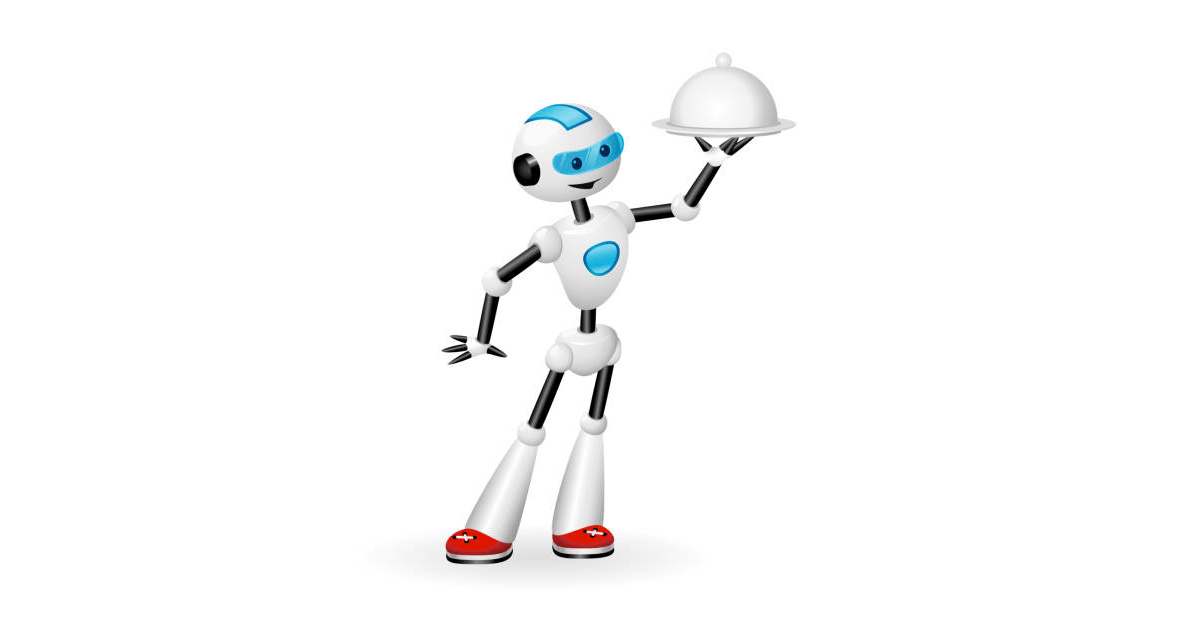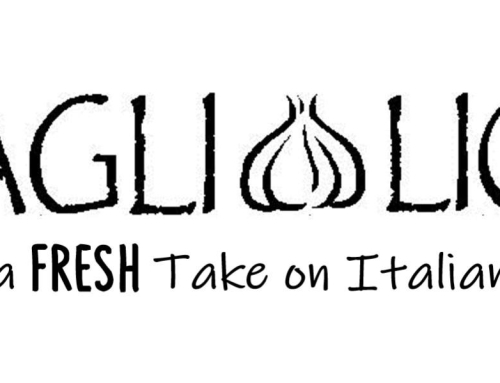Many restaurants continue to grapple with labor shortages and increasing operating costs, post pandemic. Interestingly, over 80% of restaurant jobs could theoretically be automated by robots as a result.
This blog post will explore six automation trends that are revolutionizing restaurant operations and staffing amidst these challenges. Get ready to discover what the future of dining might look like!
Trends Impacting Restaurant Automation
Restaurants are experiencing the adoption of technology and automation, integrating self-service kiosks and mobile ordering, utilizing robotics and AI, implementing contactless payment and ordering systems, as well as enhancing delivery and pickup options.
Adoption of technology and automation
Many restaurants now use technology and automation. This is because they have less staff. There are machines that can take orders or make food. People also use mobile apps to order their meals.
These changes help the restaurant work better and faster. They also keep costs low when there are high prices for things like food or energy. Over 80% of jobs in a restaurant could be done by robots in the future.
Integration of self-service kiosks and mobile ordering
Restaurants are integrating self-service kiosks and mobile ordering systems to enhance the dining experience for customers. With self-service kiosks, customers can place their orders directly without needing assistance from staff, reducing wait times and increasing efficiency.
Mobile ordering allows customers to order and pay for their meals using their smartphones, eliminating the need for physical menus or waiting in line. These innovations not only improve customer satisfaction but also streamline restaurant operations by minimizing errors and freeing up staff to focus on other tasks.
Utilization of robotics and AI
The utilization of robotics and AI in the restaurant industry is one of the key trends impacting operations. Robots are being used to automate various tasks such as food preparation, dishwashing, and even customer service.
With advancements in AI technology, robots can now perform complex functions like taking orders and processing payments. This helps to streamline processes, reduce errors, and improve efficiency in restaurants.
By incorporating robotics and AI into their operations, restaurants can enhance the overall customer experience. For example, self-service kiosks allow customers to place their orders quickly and accurately without the need for human interaction.
Additionally, contactless payment systems enable seamless transactions while minimizing physical contact during the pandemic.
Furthermore, utilizing robotics and AI can provide valuable data analysis and insights for restaurants. By collecting information on customer preferences, purchasing habits, and feedback through these technologies, businesses can make informed decisions regarding menu offerings, pricing strategies, and marketing campaigns.
Implementation of contactless payment and ordering systems
Restaurants are increasingly implementing contactless payment and ordering systems to enhance the dining experience for their customers. With these systems, customers can make payments by simply tapping their cards or using mobile payment apps, eliminating the need for physical cash transactions.
Additionally, they can place their orders through self-service kiosks or mobile apps without having to wait in long queues. This not only improves efficiency but also minimizes physical contact, promoting a safer and more hygienic environment for both customers and staff.
In fact, the COVID-19 pandemic has accelerated the adoption of contactless payment and ordering systems as restaurants strive to meet health and safety guidelines while providing convenient services to their patrons.
Enhancement of delivery and pickup options
Restaurants are enhancing their delivery and pickup options to meet the changing demands of customers. With the rise in online ordering and food delivery services, many restaurants have implemented technology-driven solutions to streamline these processes.
This includes adopting mobile apps for ordering, partnering with third-party delivery platforms, and implementing contactless payment systems. These enhancements not only allow customers to conveniently order and receive their meals but also contribute to improved operational efficiency for restaurants.
According to recent trends, there has been a significant increase in demand for these delivery and pickup options due to various factors such as the labor shortage and disruptions in restaurant supply chains caused by the COVID-19 pandemic.
Impacts on Restaurant Operations
Restaurant automation trends have led to increased efficiency and productivity, streamlined processes with reduced errors, improved customer experience, better inventory management and cost control, as well as enhanced data analysis and insights.
Increased efficiency and productivity
Restaurants are turning to automation to increase efficiency and productivity. By adopting technology and streamlining processes, restaurants can reduce errors and save time. The integration of self-service kiosks and mobile ordering also helps in improving customer experience and speeding up service.
With robotics and AI, tasks can be automated, freeing up staff to focus on more complex responsibilities. Contactless payment and ordering systems further enhance efficiency by reducing wait times.
Additionally, the implementation of delivery and pickup options allows restaurants to cater to a wider customer base while maximizing their resources. Overall, automation brings operational advantages that enable restaurants to operate smoothly in the face of staffing challenges caused by labor shortages (Fact 4).
Streamlined processes and reduced errors
Automation in restaurants has led to streamlined processes and a decrease in errors. By implementing technology and robotics, tasks that were once manual and time-consuming can now be completed efficiently and accurately.
With automated systems for ordering, payment, and inventory management, the chances of human error are significantly reduced. This not only saves time but also ensures that customers receive their orders correctly and promptly.
Automation allows restaurant staff to focus on other important aspects of their roles, such as providing excellent customer service.
Improved customer experience
Restaurants that adopt automation technologies can enhance their customer experience. With self-service kiosks and mobile ordering, customers have more control over placing their orders and can save time by skipping long lines.
Contactless payment and ordering systems provide convenience and minimize physical contact, which is especially important during the pandemic. Additionally, improved efficiency resulting from automation means faster service, reducing wait times for customers.
Enhanced data analysis allows restaurants to personalize recommendations based on customer preferences, making dining experiences more tailored and enjoyable.
Better inventory management and cost control
Restaurants can greatly benefit from automation when it comes to inventory management and cost control. By implementing technology solutions, such as inventory tracking software and automated ordering systems, restaurants can more accurately monitor their stock levels and reduce waste.
This helps improve efficiency and saves costs by ensuring that ingredients are used effectively and not wasted. Additionally, automation can provide real-time data on ingredient usage, allowing restaurant owners to make informed decisions about purchasing and pricing strategies based on demand trends.
By optimizing inventory management through automation, restaurants can minimize food spoilage, avoid overstocking, and ultimately save money in the long run.
Furthermore, automation enables better cost control by streamlining processes related to financial transactions. With the integration of contactless payment systems and digital ordering platforms, restaurants can reduce errors associated with manual cash handling while also speeding up the payment process for customers.
This not only improves customer satisfaction but also reduces the risk of loss or theft during cash-handling procedures. Moreover, automated systems provide detailed transaction records that facilitate accurate accounting practices and financial analysis.
Enhanced data analysis and insights
Restaurants are using enhanced data analysis and insights to make informed decisions and improve their operations. By harnessing the power of data, restaurants can gain valuable insights into customer preferences, purchasing patterns, and trends.
This information helps them tailor their menus, promotions, and marketing strategies to better meet the needs of their customers. Additionally, data analysis allows restaurants to identify areas where they can optimize processes, reduce costs, and improve efficiency.
For example, analyzing sales data can help identify popular items that should be stocked in higher quantities or highlight underperforming dishes that may need to be revamped or removed from the menu.
Impacts on Staffing Amid Labor Shortage
Staffing amid the labor shortage will experience a redefinition of job roles and responsibilities, with employees being trained and upskilled for new technologies and a shift towards higher-skilled positions.
Redefinition of job roles and responsibilities
As automation becomes more prevalent in the restaurant industry, there is a need for redefining job roles and responsibilities. With tasks being automated, employees will have to adapt to new ways of working.
This may involve learning how to operate and maintain technology-driven systems or focusing on tasks that require human interaction, such as customer service and problem-solving. Training and upskilling programs will be essential for employees to keep up with technological advancements.
Additionally, higher-skilled positions may emerge, requiring specialized knowledge in managing automated systems. While these changes can lead to improved work-life balance and more fulfilling roles for staff, there may also be challenges related to potential job displacement and reemployment amid the labor shortage.
Training and upskilling employees for new technologies
Training and upskilling employees for new technologies is crucial in the face of restaurant automation. As more restaurants adopt technology and automation, it becomes essential for staff to be trained on how to operate and utilize these new systems effectively.
This training can help employees stay relevant in their roles and adapt to the changing demands of the industry. By providing proper training, restaurants can ensure that their staff feels empowered and confident when using new technologies, leading to increased efficiency and productivity.
It also allows employees to take on higher-skilled positions as they gain proficiency in operating automated systems. With ongoing training opportunities, staff members can continue to develop their skills and contribute to the success of the business, even amidst a labor shortage.
Shift towards higher-skilled positions
As the restaurant industry embraces automation, there is a noticeable shift towards higher-skilled positions. With technology taking on repetitive tasks like order-taking and payment processing, employees are now able to focus more on providing exceptional customer service and managing complex operations.
These higher-skilled positions require employees to possess advanced knowledge of technology systems, data analysis, and problem-solving skills. By upskilling their workforce, restaurants can adapt to the changing landscape and ensure that their staff members remain valuable assets in an automated environment.
Improved work-life balance for staff
Restaurants are turning to automation to improve the work-life balance for their staff. By implementing technology and robotics, tasks that were once time-consuming and stressful can now be done more efficiently, allowing employees to have more control over their schedules and reducing their workload.
With self-service kiosks, mobile ordering systems, and contactless payment options, staff members can spend less time taking orders or processing payments and focus more on providing quality service to customers.
This shift towards automation also opens up opportunities for higher-skilled positions, creating a better work environment for employees in the long run.
Potential job displacement and reemployment challenges
The rise of automation in the restaurant industry may lead to potential job displacement and reemployment challenges. As more tasks become automated, some traditional roles may no longer be needed, which could result in staff reductions or job changes.
Employees will need to adapt to new technologies and acquire new skills to keep up with the changing demands of the industry. This shift towards automation may also create a divide between higher-skilled positions that require technical expertise and lower-skilled jobs that can be easily replaced by machines.
It is crucial for both employers and employees to navigate these challenges and find ways to ensure a smooth transition while supporting workforce development initiatives.
Conclusion
In conclusion, the future of restaurant automation is promising. With trends like technology adoption, self-service kiosks, robotics, and contactless systems, restaurants can improve efficiency and customer experience.
However, this also brings changes to job roles and the need for employee upskilling. While there may be challenges in reemployment and potential displacement of jobs due to automation, the industry must find ways to balance technological advancements with workforce management to create a more efficient and sustainable future.
FAQs
1. What are some trends impacting restaurant operations in the future?
Some trends impacting restaurant operations in the future include increased use of automation, online ordering and delivery services, self-service kiosks, and contactless payment options.
2. How will restaurant automation affect staffing amid a labor shortage?
Restaurant automation may lead to a reduction in certain job roles or tasks that can be automated, resulting in potential changes to staffing needs. However, new roles related to technology and customer service may also emerge.
3. Will all restaurants become fully automated in the future?
Not all restaurants are expected to become fully automated in the future. While automation is becoming more prevalent, there will likely always be a need for human interaction and skilled staff members within the restaurant industry.
4. What are some impacts of automation on restaurant operations?
Automation can have various impacts on restaurant operations such as increased efficiency, improved order accuracy, streamlined processes, reduced labor costs, and enhanced customer experience through features like self-ordering systems and personalized recommendations.
General Facts
- The restaurant industry is experiencing a massive labor shortage, which has led to an increase in automation trends.
- Quick-service restaurants are particularly impacted by the decrease in staff.
- In 2022, restaurants had to cut operating hours due to the labor shortage.
- The ongoing labor shortage is pushing restaurants to find operational efficiencies.
- Declining consumer expenditure and excessive labor turnover are driving the increased importance of robotics in the restaurant industry.
- Decreasing churn is seen as a way to mitigate the restaurant staffing shortage.
- More businesses in the food industry are turning to robots and automation to cut costs.
- High inflation and a labor shortage are driving the trend of automation in the food industry.
- Over 80% of restaurant jobs could be automated by robots.
- The COVID-19 pandemic has impacted restaurant supply chains and made it difficult for some restaurants to source their normal ingredients, leading to increased demand for automation.
Source URLs
www.qsrmagazine.com/outside-insights/6-automation-trends-impacting-restaurant-operations
www.restaurantdive.com/news/5-trends-that-will-shape-the-restaurant-industry-in-2023/639707/
www.money.yahoo.com/rise-robots-shaping-future-restaurant-145520331.html
www.pos.toasttab.com/blog/on-the-line/how-to-handle-the-restaurant-industry-labor-shortage
www.insiderintelligence.com/content/restaurants-turn-robots-automation-labor-shortages-continue
www.adeccogroup.com/future-of-work/latest-insights/80-of-restaurant-jobs-could-be-taken-over-by-robots/
www.get.apicbase.com/restaurant-future-after-covid/



